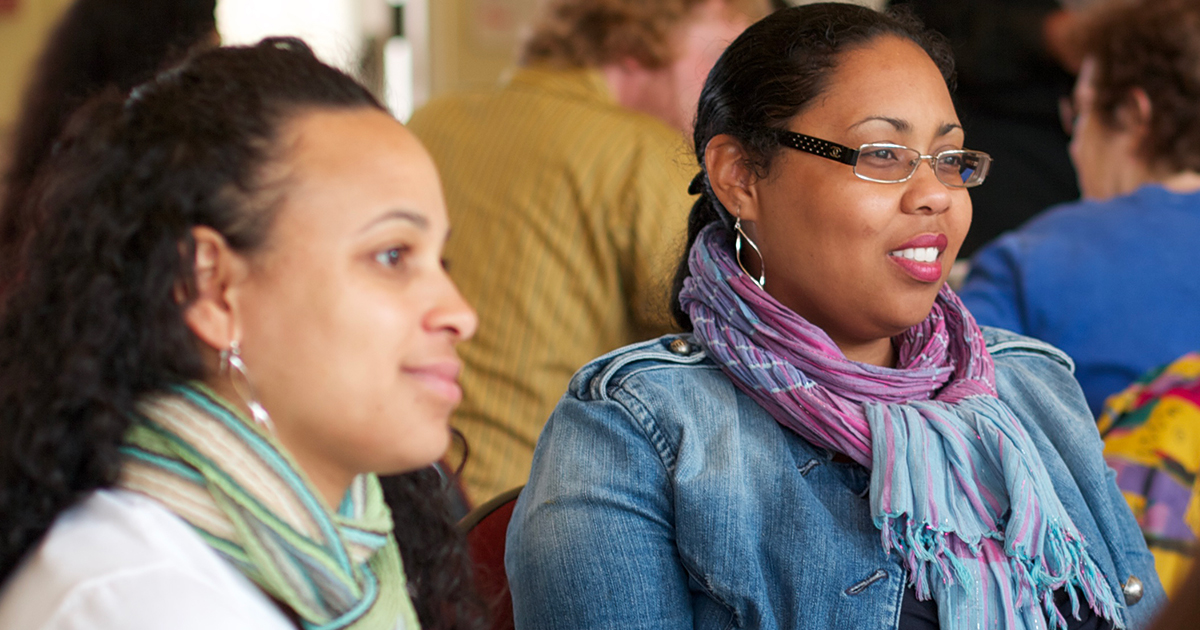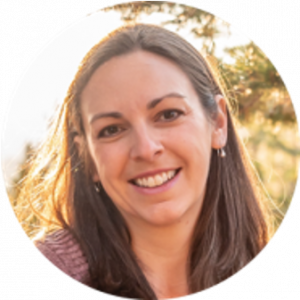Back-to-School Spotlight: Student Leaders in New Orleans Discuss What’s Needed to Shift School Safety Paradigms
Posted on

This post is the second in a series that explores how one New Orleans classroom is helping to cultivate student leadership and a deeper understanding of what it means to be safe at school.
In the first post in this series, “A New Guide Sparks a Paradigm Shift Around Complex Issues of School Safety,” WestEd’s Laura Buckner introduced the “Leadership for Social Change” course at Bard Early College of New Orleans (BECNO). This course, developed by BECNO instructor Rachel Nelson, introduces students to community-focused leadership principles that emphasize the sharing of power and enacting positive social change. Students in the course are using Reimagining School Safety: A Guide for Schools and Communities from WestEd’s Center to Improve Social and Emotional Learning and School Safety to inform their leadership journeys and to reconsider notions of safety, community, discipline, and engagement.
This post presents the voices of some of the students in the course, who interviewed each other to learn more deeply about how the concepts of the guide have shaped their thinking and leadership journeys.
The Interviews
Le’Shyra, Jaleah, Nicolas, and Joshua are second-year students at BECNO. (They are seniors at their traditional high schools, which they attend part-time.) All have had experiences that shaped how they view school safety and how they feel students are listened to at school, including feeling ignored or unsafe when trying to discuss problems with school administrators.
The students paired up to interview each other: Le’Shyra and Jaleah conducted one of the interviews, and Nicolas and Joshua conducted the other. In their interviews, they discussed their past experiences with school safety and how the Reimagining School Safety guide encourages a new paradigm for safety that includes student voice and leadership and emphasizes positive community elements. They then discussed how their school and communities could be positively impacted by systems designed to support and affirm rather than punish and control. Although the student pairs interviewed each other separately, we share highlights from both of the interviews here.
Current Paradigms and How the Guide Asks Us to Think Differently
Joshua: If we’re going to talk about safety, I feel like first thing I need to say [is that] safety is kind of subjective, as everyone needs to feel safe in the ways that comfort them. Previously I wasn’t able to feel safe at school because I feel like the school’s system of safety was really focused on just keeping people physically safe. There’s nothing wrong with prioritizing that, but as I go about my journey I realize how much more goes into safety—like feeling emotionally supported and part of a community—and how important those elements are.
Le’Shyra: I have spent a long time in school systems where other people, mostly adults, forced their ideas of school safety on me, and now I am at the age where I feel confident to express my own. I feel as though school safety should not just ensure someone’s physical safety but also their mental safety, especially when you’re talking about kids in school. A lot of people don’t feel emotionally safe, and that is a big cause of unnecessary conflicts.
Jaleah: My journey includes being a student advocate to ensure student voices are heard, especially relating to things like our safety and education. The guide mirrors my own values of amplifying student perspectives. As a student, I have witnessed adults abusing their power simply because they feel they know what’s best for us. Giving students decision-making power within the school setting will contribute greatly to the system as a whole as well as to the individual students’ experiences.
Le’Shyra: The guide explained simple, complicated, and complex systems. Complex systems involve relationships and interconnections, which you don’t have as much control over because you can’t predict someone’s reaction to something. So building a better school system is going to take some time, dedication, and care for the people it’s affecting.
Joshua: I feel like the guide is asking me to think of school as a system and to find where I’m at in the system so I can see what needs work. In the guide, there’s a question about what interactions among parts of a system define its behavior or structure. For example, one element of safety—discipline—doesn’t have to involve suspension and punishment but can be more restorative. And that can impact the entire system.
Nicolas: The guide [asks] us to think about where we are and where we can be, because the world is always changing and looking for ways to evolve for the better. The school system is one of the most crucial systems to be looked at because the safety of the kids in the building is the equivalent of protecting this planet’s future. The guide allows me to put that into perspective better.
Joshua: Yeah, and to take it even further, school and safety go hand and hand and are necessary for each other to operate.
Embodying a Safer, Student-Centered Future
Jaleah: Personally, the paradigm shift that I would like to see is shifting the power from the administrators to the students, or at least prompting a form of inclusion. Having students dictate what safety feels like is the first step to having an actual safe environment.
Joshua: I feel like safety should include feeling socially and physically welcome in whatever space you’re in. While physically being safe does play a major role—if not the main role—I also feel like being able to show your authentic self or not be on guard with your personality between your friends and community—all those things contribute to safety.
Nicolas: Continuing from what Joshua said, I feel as though safety is about a state of mind. If you feel comfortable around the people you are with and the environment you are in, you will be more relaxed and safe.
Joshua: Right now, the students in our class are launching a peer-mentoring initiative where incoming students are paired with older students to receive support and guidance on their social–emotional development and to address [their needs] in their transition year. [This initiative] encourages interactions between older and younger students to build an inclusive community. We are designing this program in response to the need for building community, inclusivity, and holistic support as critical pieces of school safety. The program positions students as key change-makers and co-creators in their school community. It will help create a safe and helpful community where students can learn skills from each other.
Educators can gain ideas for using the Reimagining School Safety guide in their own schools or classrooms, including insights from BECNO’s Professor Rachel Nelson in the case story, Engaging Students as Leaders to Reimagine School Safety.
 As a Program Associate for WestEd’s Resilient and Healthy Schools and Communities team, Laura Buckner translates research to practice and supports the implementation of evidence-based practices in education. Buckner’s work centers on sharing information that is timely, relevant, and useful to education leaders as they seek to improve systems to address whole-person and whole-community needs.
As a Program Associate for WestEd’s Resilient and Healthy Schools and Communities team, Laura Buckner translates research to practice and supports the implementation of evidence-based practices in education. Buckner’s work centers on sharing information that is timely, relevant, and useful to education leaders as they seek to improve systems to address whole-person and whole-community needs.
